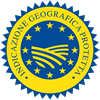Description
The Westlandse Druif PGI is a greenhouses grown table grape of different varieties and colours.
Production Area
The production area of the Westlandse Druif PGI lies in the following towns: Naaldwijk (Honselersdijk), 's-Gravenzande (Maasdijk), Maasland, De Lier, Monster (Poeldijk) Wateringen (Kwintsheul), Hoek van Holland, in the Westland area, western part of the South Holland province. The greenhouses are located mainly in the towns of Monster, Wateringen and Poeldijk.
Production Method
The growing is artisanal and is done entirely by hand. When the grapes reach the appropriate size, about two months before ripening, bunches are thinned in order to improve the quality and shelf life of the grapes. The greenhouses can be heated to accelerate the ripening of the grapes so they are already ready in June; while if this process is not done, the maturation of the grapes begins in August. Picking continues until the end of October, but varieties, if refrigerated, are even available until December. Much of the crop is sold directly to individuals or to greengrocers, while some varieties are auctioned.
Appearance and Flavour
Westlandse Druif PGI is characterized by large bunches with round or oval grapes and a waxy skin. According to the variety, the colour can vary from dark blue to white/ green. Bunches weigh between 300 gr and 1250 gr, with an average weight of 500 gr. The flesh is firm, juicy and fresh. The product stands out for its pronounced aroma and typical sweet flavour
History
The origins of the Westlandse Druif PGI are related to the introduction of the grape in the production area, which was started by expert horticulturists around the 17th century. The activity only took on a certain importance in the 19th century, when the grapes began to be exported in 1830, giving great impetus to the production. Southern facing walls were then constructed in order to allow the vine the maximum amount of light and heat. After 1850 glass structures were introduced in order further protect the crop. The maximum production was recorded in 1936, with 22 million kg, while after the Second World War many vines were uprooted mainly as a result of the sharp increase in costs and growing competition from the grapes grown in the open field of southern countries. Today, the production of Westlandse Druif PGI continues, albeit on a smaller scale, thanks to the connoisseurs of this fine grape variety.
Gastronomy
The Westlandse Druif PGI must be stored in a cool and dry place away from intense odours, or in the refrigerator. The product is eaten fresh, either after meals or as a snack, as it is very digestible and characterized by a high content of natural sugars, vitamins and minerals.
Marketing
The product is sold as Westlandse Druif PGI. It is mainly marketed loose or in small cartons.
Distinctive Features
Some areas of the Westland are particularly suited to viticulture, having sandy or loamy soils. These areas, considered as being ideal to obtain the finest grapes, make the Westlandse Druif PGI a regional product of exquisite flavour and much appreciated, which greatly contributes to the strengthening of the production region.






